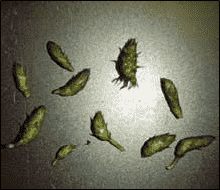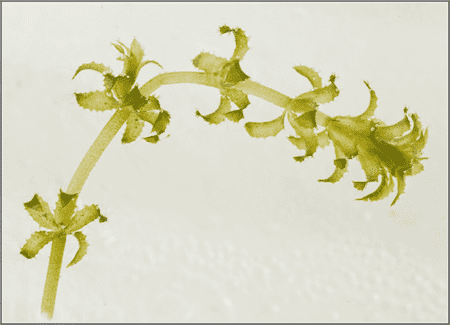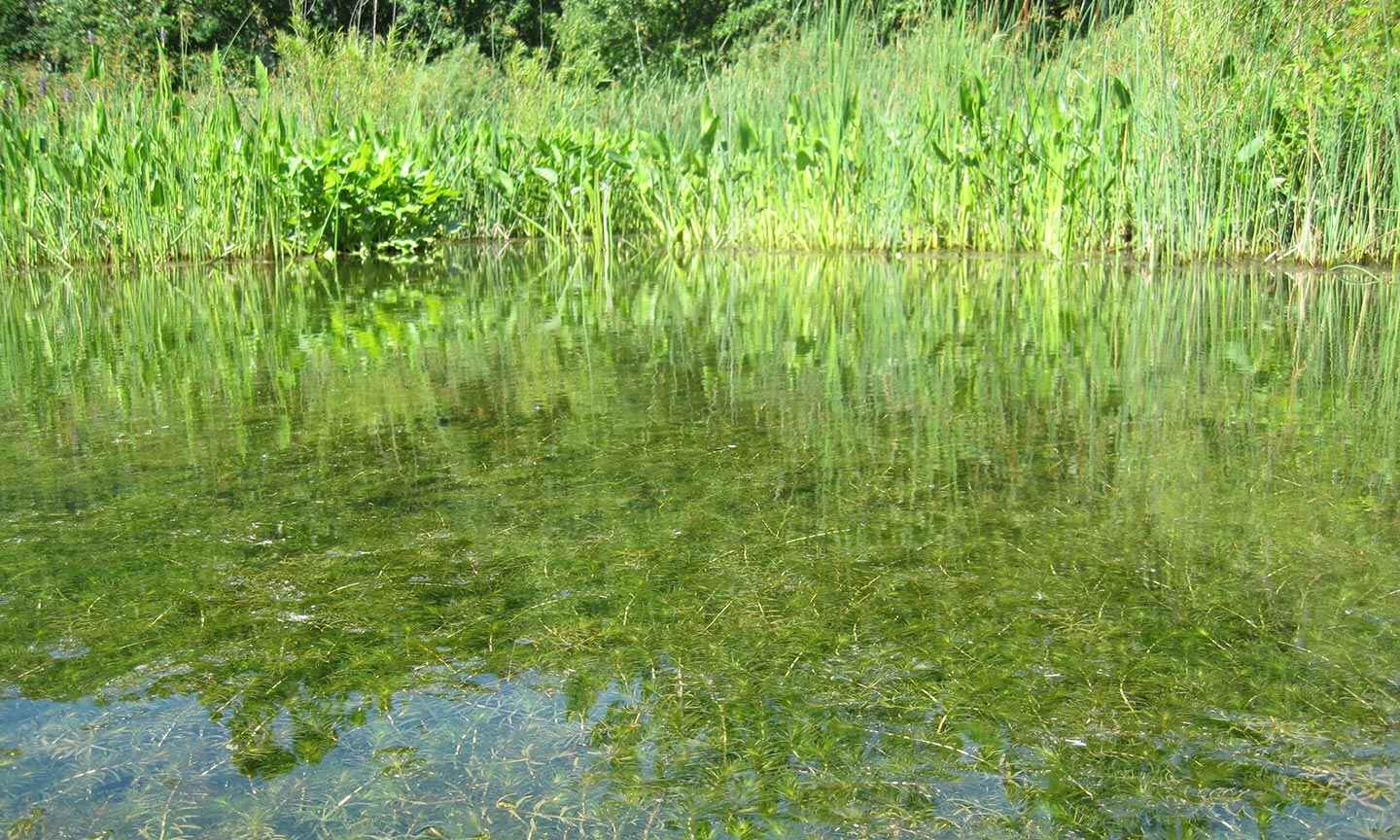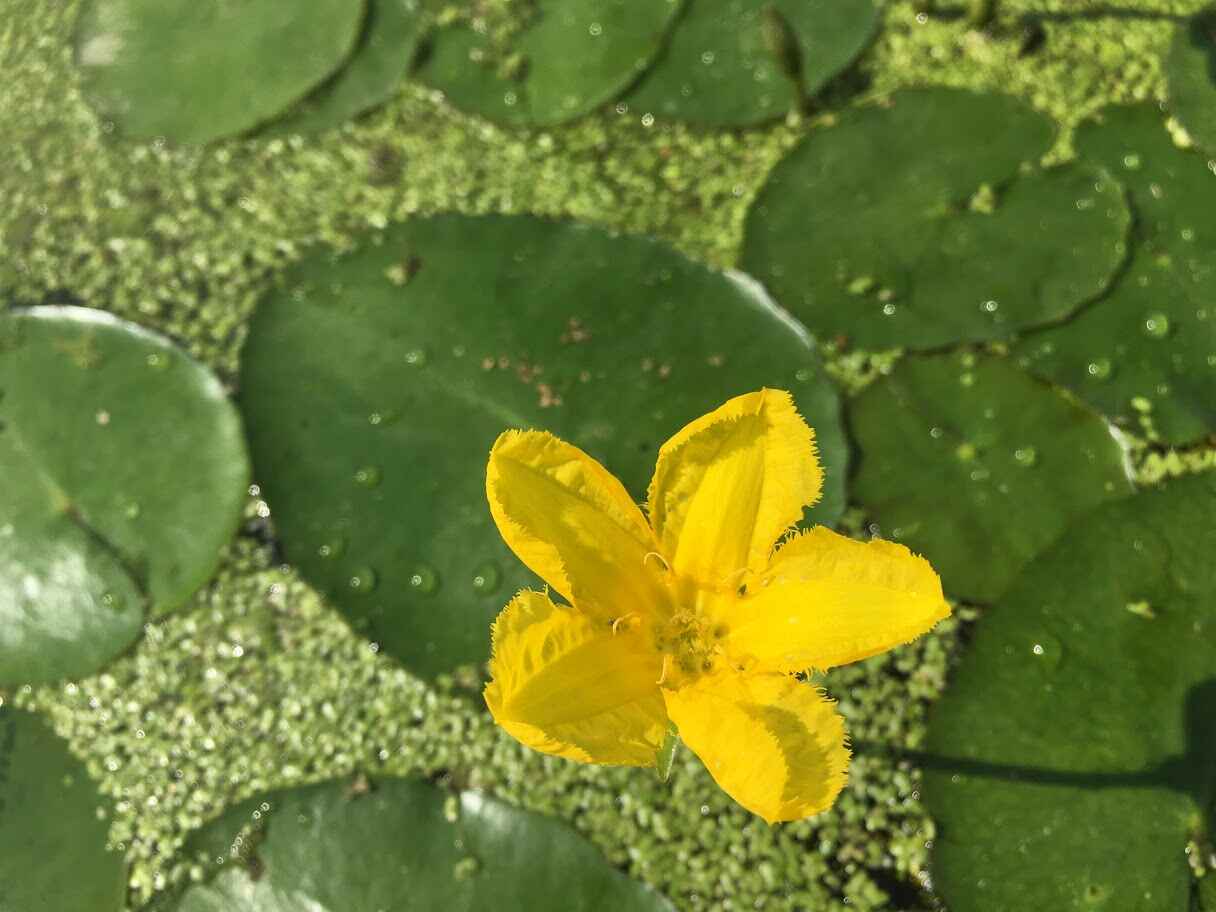Cleveland Metroparks receives funding from the Ohio Department of Natural Resources to detect and control aquatic invasive plants. Our staff conduct surveys and management activities in the Lake Erie drainage basin. One plant that takes a lot of time and energy is Hydrilla verticillata.
Aquatic weed scientists consider Hydrilla the most problematic and invasive aquatic plant in the United States. Hydrilla is native to southeast Asia and was introduced first to Florida in the late 1950’s via the aquarium trade. Over the past 80 years, Hydrilla has been introduced to the U.S. many times and is now in at least 29 states where it is a burden to our water resources.
Hydrilla is a warrior species. It pushes out other plant life and changes the ecosystem for humans and wildlife. Hydrilla forms dense mats that interrupt fishing and boating and swimming. It can also clog water intake pipes and control features. When Hydrilla occupies most of the water column, sport fish size has been shown to decrease. Hydrilla has several competitive advantages over other plants: It can grow in colder temperatures, requires less light, is more efficient at taking up nutrients than native aquatic plants, and is extremely effective at reproducing. Besides making seeds, it can sprout new plants from root or stem fragments. As little as an inch of a Hydrilla plant can start a new population.
Hydrilla's success is linked to its ability to produce structures called turions and tubers. Turions are compact buds produced along the leafy stems, almost like a winter leaf bud on a tree. Turions break free from the parent plant and may float or be carried by currents to start new populations elsewhere.


Turions are generally about a quarter inch long, dark green, and appear spiny.
Tubers are small, potato-like structures, and consist of overlapping scales formed at the end of roots. Like potatoes, there are many shoots that may keep sprouting year after year. Hydrilla plants can produce up to 5,000 tubers in one square meter of sediment! Both tubers and turions are produced in the fall, and tubers may remain dormant for several years in sediment regardless of ice cover, drying, or herbicides.

Hydrilla tubers are around one centimeter in length and can may be colored by the sediment – brown, red, black, and white.
Tubers are a great way to help identify Hydrilla since no other aquatic plant produces these fingernail-sized root structures. Other characteristics to look for include:
- Leaves in whorls around the stem (generally five leaves per whorl).
- Serrations or small spines along the leaf edges and small spines on the underside midrib.
- The midrib of the leaf is often reddish when fresh.

Image of Hydrilla vegetation. Serrated leaves are visible to the naked eye.
Recreational users (boaters, anglers, swimmers) can easily and unknowingly move fragments from infested waters, spreading this aggressive plant to new ponds, lakes, streams and rivers. With a little care and effort, you can help stop the spread of these frustrating plants. For more helpful tips, please see Stop Aquatic Hitchhikers, a national resource center.
Hydrilla has been eradicated from 4 of 5 sites in Cleveland Metroparks. Only one wetland in West Creek Reservation is still under management. Other Hydrilla locations in Ohio include Mosquito Creek Lake, Pymatuning Reservoir, and Alum Creek Lake. Large, public waterbodies with many access points can present a high risk of Hydrilla spread. Increased surveillance and future management are critical to preventing future spread of this invasive plant. Cleveland Metroparks has an obligation and responsibility to prevent future spread into Lake Erie.
Stop the spread!
Clean all vegetation and mud from boats, canoes, motors, trailers, clothing and boots before leaving any location.
-

Report Aquatic Invasive Species
Find hydrilla in your waterbody? Help us track this invasive plant and other species!
-

Cleveland Metroparks Annual Aquatic Invasive Species Report
View the annual invasive species report.
